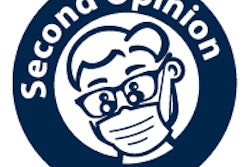
The DMF (decayed-missing-filled) index has been a long-standing tool in dental public health to evaluate epidemiological trends in dental caries. Studies have indicated a general reduction in dental caries rates for most U.S. demographics studied over the past two decades. The exception has been for children in disadvantaged socioeconomic groups.
There are several different classifications, which specifically target the study of the five permanent tooth surfaces (DMFS), erupted permanent teeth (DMFT), as well as the deciduous teeth and surfaces (dmft and dmfs). Recognized shortcomings of these studies include research bias in assessment of dental caries, the historically modern placement of dental sealants, and no accounting for teeth lost not to caries but to trauma or periodontal disease, and equal statistical weight given to well-restored teeth versus unrestored teeth with active dental caries.
 Michael W. Davis, DDS.
Michael W. Davis, DDS.Dental methods and materials have made great advancements since the DMF index studies of the 1930s and 1940s, especially in recent years. Enhanced caries assessment has resulted in additional restoration of carious teeth and additional tooth surfaces not observed in former times. Modern dental practitioners are far more likely to employ some degree of clinical magnification than in past years. This may range from an LED headlamp attached to standard magnification loupes (standard field magnification loupes) to surgical operating telescopes. Yet, overall caries rates have continued to decline.
Additionally, modern clinicians employ caries detection devices ranging from more advanced laser fluorescence devices, optical coherence tomography (OTC), and optical light transillumination to more simplistic caries detection devices. In fact, utilization of a sharpened dental explorer, which has been a mainstay of former caries assessment studies, is today shunned by a number of clinicians.
Progress in the field of adhesive dentistry and minimally invasive dentistry has today brought forth preventive resin restorations. Tooth restoration is limited to caries-affected enamel and removal of the "organic plug" within a pit or groove, generally without entry, or with only limited entry into dentin. This has been made possible via fissurotomy burs and micro air abrasion. The former G.V. Black tenant of "extension for prevention" is no longer valid. However, when frank caries into dentin are restored on an occlusal surface, a preventive resin restoration may proactively be extended, into the same tooth's deep buccal or lingual groove. Thus, preventive resin restorations may elevate the total number of teeth restored, as well as total tooth surfaces restored. Sound healthy tooth structure is conserved.
A very disturbing report was issued in July 2013: the U.S Senate report on corporate dentistry. It was made very clear that certain interstate corporate-directed dental clinics specifically targeted the demographic of children receiving Medicaid reimbursement with unethical practices. The clinics highlighted in this bipartisan Congressional study showed widespread gross overutilization of prefabricated steel crowns in restoration of deciduous teeth to maximize payments under state and federal administered Medicaid programs. Teeth restored with steel crowns often had minimal to no radiographical evidence of caries. Recently restored teeth frequently were nearly ready to exfoliate. Obviously, this iatrogenic and unethical practice on a large scale can substantially increase dmfs and dmft index scoring.
Another possible influence of modern DMF index studies may be caries remineralization practices. An incipient carious lesion of former years may today be arrested or reversed. Unfortunately, this valuable clinical service is not remunerated under most insurance programs or Medicaid. However, it is being addressed in a number of public health and teaching clinics, as well as a number of advanced private-pay practices. This beneficial service is only expected to grow and further impact and potentially distort DMF index studies.
Conclusion
It's clear that advancements in modern dentistry, especially over the past decade, have a great influence on the validity of DMF index research studies. One must have serious concerns if a current study can have any meaningful relationship to studies of past years or studies in the future, as methods and materials of restorative dentistry, treatment of caries, and caries diagnosis are exponentially progressing. This rapid change in dental technology isn't expected to slow but instead accelerate, and DMF index studies exhibit vastly different parameters than in former years.
The National Health and Nutrition Examination Surveys (NHANES) have traditionally depended on DMF index studies. The value of DMF studies must be reassessed, and more valid reporting mechanisms developed, such that demographic trends in dental caries may best be epidemiologically evaluated.
Seemingly, our most vulnerable population to dental caries is children living below the federal poverty line, as reported by NHANES III. This is also a population disturbingly too often subjected to needless and excessive clinical treatments with steel crown restoration.
In enough numbers, this pediatric dental care can distort the DMF index. As a result, additional gasoline may be poured onto the fire in a self-fulfilling prophecy. Sadly, continued clinical treatment with restoration of incipient lesions (or noncarious lesions) of deciduous teeth may lead to more of the same, in a continual and never-ending iatrogenic cycle, based on greed and/or ignorance.
Michael W. Davis, DDS, maintains a private general dental practice in Santa Fe, NM. He serves as chairperson for the Santa Fe District Dental Society Peer Review. He is also active in expert witness legal services.


















